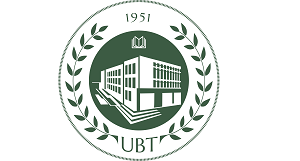SONILA ÇOÇOLI1*, PRANVERA ÇABELI1, TANA SHTYLLA1
1Agricultural University of Tirana / Faculty of Veterinary Medicine, Kamez, Tirana, Albania
*Corresponding author e-mail: sonilacocoli@yahoo.com
Abstract:
Monitoring the presence, distribution and prevalence of one or more microorganisms responsible for food poisoning, is a necessary tool to evaluate the products at all the stages of chain production and at the same time, is one of the main objectives for food safety Even in industrialized countries, fishery products often derive from areas which are not well – defined, are transported under bad hygienic conditions and not at the adequate temperature. All this, significantly affects the hygienic quality of such products, which is highly sensitive. The aim of this study was to classify the production areas of bivalve molluscs in Butrinti lagoon. Bivalve molluscs can concentrate contaminants from water environment, during their normal filter-feeding activity. In the European Union, the risk of human and animal faecal contamination in bivalves is estimated by determining the concentration of Escherichia coli in time-series samples from production areas. In 234 bivalve molluscs samples, analyzed during the period 2010-2012, 65.4% of them, resulted in low contamination levels ≤ 230 MPN E.coli/100 g; 25.6% between 230 and 4600 MPN and 9.0% resulted of over 4600 MPN E.coli/100 g. Butrinti lagoon is classified as B shellfish production area, because it fully meets the criteria of Reg. 854/2004, which stipulates that live bivalve molluscs derived from these areas must not exceed, in 90% of samples, 4600 MPN E. coli/100g and 10% of samples should not exceed the value of 46000 MPN/100g. Butrinti lagoon is classified as a B production area; therefore the molluscs must necessarily go through the process of depuration before being consumed.
Keywords: Butrinti Lagoon, bivalve molluscs, Escherichia coli.

